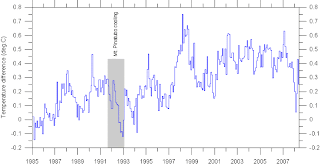As I have already stressed over the course of this blog, geoengineering is a very controversial topic. However, what exactly is geoengineering?.....if you’ve read my first two posts then you probably think that you have this all covered. However, is it more complicated that it at first might seem?
Might I remind you of the definition of geoengineering provided by the National Academy of Sciences
“options that would involve large-scale engineering of our environment in order to combat or counteract the effects of changes in atmospheric chemistry”
Now let me ask you this:
- If we actively try to reduce fossil fuel emissions, is this geoengineering?
- Afforestation, a means of geoengineering?
Don’t panic if you don’t know the answer! Neither is right or wrong and this is where the problem lies. I have recently read an article entitled ‘The economic diplomacy of geoengineering’ (Schelling, 1996) that discusses this in a little more detail.
A number of intriguing scenarios are set out for example:
The construction of a shipping canal between the Gulf of Mexico and the Pacific Ocean
- This would not be classed as geoengineering - it would have ‘geo’ side effects though. Species would interact with those which previously had been 10,000 miles apart.
- However, if this was done intentionally then it would almost certainly be classed as geoengineering
If we learn how to increase snowfall in the:
- Rockies to increase water supply to Colarado and improve skiing this is not geoengineering
- If we do it in the Arctic to store water and counteract sea level rise then this is geoengineering
These contradictions just shouldn’t exist!
What struck me the most in this article is the point that Schelling makes about ‘people having a preference for dealing with causes rather than the symptoms’. He suggests that people would prefer to produce less CO2 rather than remove it. Afforestation for this reason should, but is not referred to as geoengineering. It is rather seen as more natural even though it is not significantly different from ocean fertilisation.
Geoengineering is also a political nightmare! It is so large scale that it transcends national boundaries and as a result.....who should pay? can we all afford to pay the same? Do we all reap the same rewards? To what extent should we geoengineer? When it comes to afforestation for example.....England will find it much more difficult to offset carbon than Siberia where there is plenty of space to plant trees. England should surely be allowed to offset their carbon through planting trees wherever land is cheapest......shouldn’t they? It is these unanswered questions that haunt world leaders and will continue to do so for the time being.
A significant obstacle lies in the question, who reaps the benefits? If we can stop a hurricane from striking the Phillipines then it would appear obvious that we should! Simple
.....BUT......
the south of China would suffer from decreased rainfall! Now a little more Complicated!
Anyway, I hope this post gives you a little insight into the political complexities that surround geoengineering.








